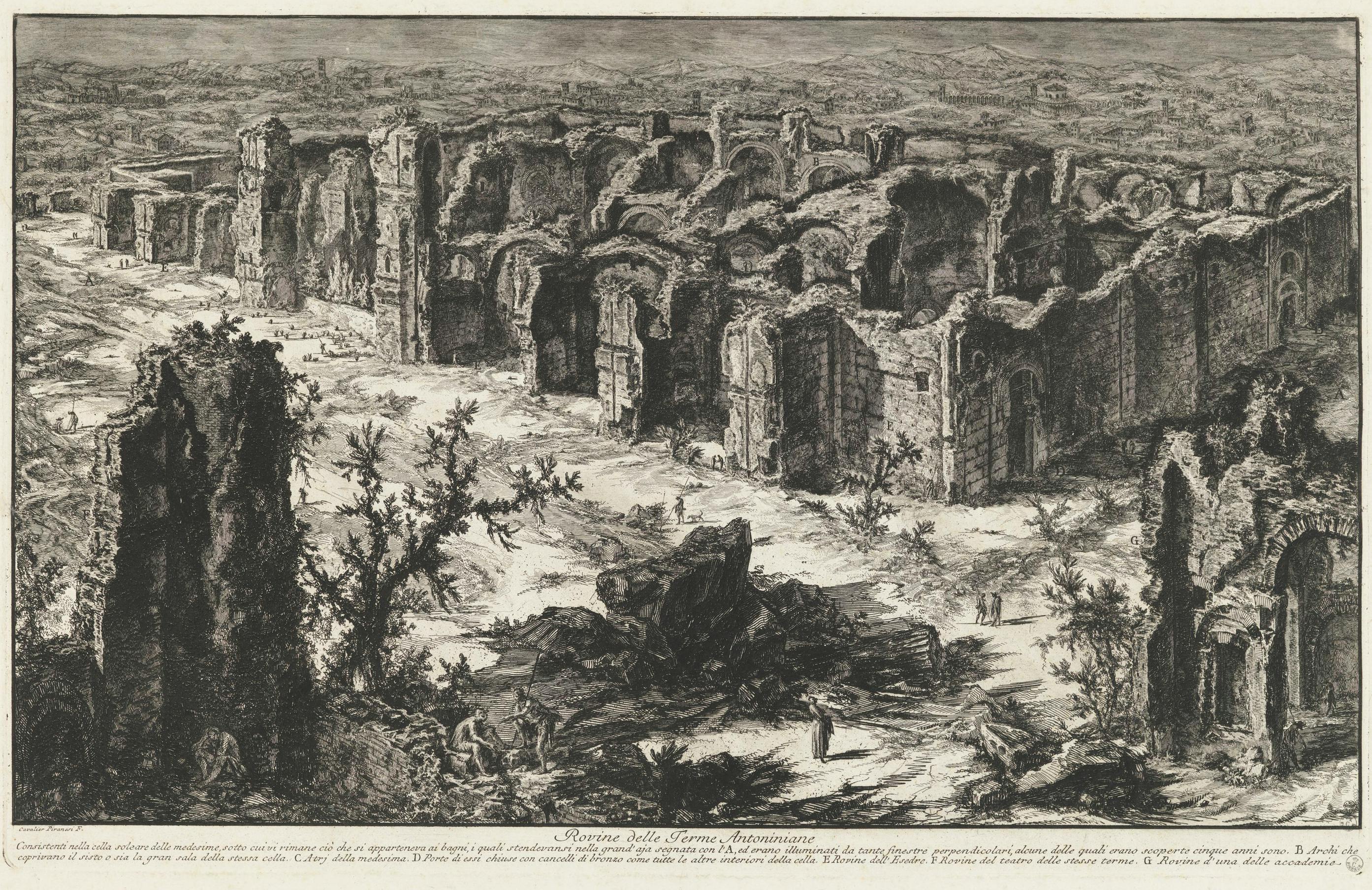Ruins of the Antonine Baths, in ‘Views of Rome’
Giovanni Battista Piranesi (Venice 1720 – Rome 1778)
The works of vedutista, Piranesi, are among those which left a significant impression not only on 18th-century imagery, but also on the vision of the romantic period, with its power to link mental activity to the observation and identification of a place and also to extend the image beyond visual confines. Often the result are depictions that transcend documentary value; the result is not a description of reality, but rather a reconstruction that offers elements for an “impression of memory”.
From the mid 1750s, Piranesi intensified the dramatic nature and visual impact of the panels that he was adding to his series of ‘Views of Rome’, adopting important innovations in his illustrative techniques, such as the aerial view of complex structures, including the Colosseum and ancient baths. The monumental emphasis of this view of the Baths of Caracalla, then known as the Antonine Baths, is emblematic of a system of representation that as well as providing perspective views, lingers over the description of materials and construction techniques. The view of the structure is taken from the south, bypassing the slopes of Caelian Hill and embracing the churches and monasteries that stand out from the compressed profile of the mountains. The vegetation contributes to the effective rendering of the suburban setting, populated with travellers, prostitutes, and ragamuffins hiding among the ruins, lending a tragic, contemporary feel to the already melancholy nature of the ruins.
